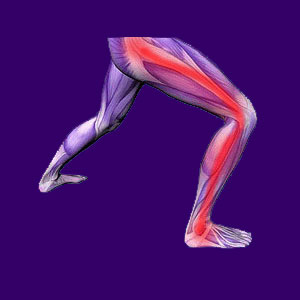
Radiculitis describes pain that originates in the spinal nerve roots and affects particular parts of the body based on innervation patterns. Basically, although symptoms might be experienced in areas far from the vertebral column, the source process of this pain resides in the spine and is caused by compression or chemical irritation of the affected neurological root.
Radicular pain, also commonly called radiculopathy, is the justification for the majority of back and neck pain treatment, including spinal surgery. So many health issues are blamed on nerve root issues in the spine, which is unfortunate, since these assumptions are often off-base and incorrect.
This important essay investigates the facts and misconceptions of radiculopathy conditions. We will explore the causes of radicular pain, the symptoms of radiculopathy and separate truth from myth when it comes to pinched nerves in the spine.
Radiculitis Explained
What exactly is radicular pain? Let’s provide a bit of anatomical background to answer this question clearly:
The spinal nerve roots branch off the spinal cord at each vertebral level and exit the spinal column. These nerves then branch out to form an incredibly comprehensive and complex system of nerve tissues throughout the body. Each nerve root serves the motor and sensory needs of particular areas of the body. Therefore, when some pathology affects the spinal nerve root at or near its source, the patient will demonstrate dysfunction or symptomology at the area of innervation.
Radiculitis can occur from structural compression or from chemical irritation. Irritation, more commonly known as chemical radiculitis, can only occur when a ruptured disc spills irritating proteins onto sensitive nerve fibers. This diagnosis is controversial, since it seems that only some people are really sensitized to this protein, while others tolerate it without much or any pain at all. Additionally, when chemical irritation occurs, some people can organically recover quickly as their body absorbs or ossifies these irritating substances, while others seem to languish in pain for decades illogically.
Far more common as a cause of radiculopathy is structural compression, which can occur due to many possible reasons. We detail many of these reasons in our causes of a pinched nerve article, but basically, can break these explanations down into several groupings:
Structural compression can occur due to direct pressure, such as that exerted by a herniated disc or spinal fracture.
Structural compression can occur due to a loss of patency or a misalignment in the central spinal canal, such as those caused by spinal stenosis, spondylolisthesis and severe atypical curvatures like hyperlordosis, hyperkyphosis and scoliosis.
Structural compression can occur due to a loss of patency or a misalignment in the foraminal canals, often called foraminal stenosis. This can also occur due to arthritis, facet joint pathology, as well as vertebral misalignment and spinal curvature causations.
Radicular Nerve Pain Myths
One of the biggest problems with a radiculopathy diagnosis is the simple truth that so many of these conditions are misdiagnosed. This is due to the fact that so many of the most common causes of actual compressed nerves are normal and virtually universally observed changes in the spine. This includes degenerated and herniated discs, spinal osteoarthritis, central and foraminal spinal stenosis and facet joint changes.
Another problematic myth is that a spinal nerve root compression leads to back or neck pain. It is possible that some transient pain might be experienced, but it is highly unlikely that persistent pain will continue to be a major concern at the compression location. This is because the nerve will lose its ability to function due to compression. The result will be numbness, not only at the site of compression in the spine, but also in the innervated area of the body. This is why pinched nerves should not logically cause any type of chronic pain, but instead objective versions of numbness and weakness, as well as dysfunction.
Radiculitis Truths
Although some of the most often made diagnoses justifying back pain treatment, pinched nerves are actually rather rare and often resolve themselves. Treatment is rarely needed. In cases where the symptoms do correlate to the diagnosis exactly by duration, location and expression, targeted treatment should completely resolve the pain and related effects in most instances. When treatment fails, we usually consider misdiagnosis as the most logical explanation.
It is vital to understand that in order for a nerve root to suffer structural compression, virtually the entire central spinal canal or foraminal space in the affected area would have to be sealed off. Nerves are small and only need a tiny fraction of the space allotted for them to successfully traverse these canals without impingement. Even in cases of very severe stenosis, neurological compression is not universally observed.
It should be noted that we see far more cases of nerve root ischemia than we do nerve root compression. Often, this process is completely ignored by diagnosticians, with care providers blaming structural compression on some incidental scapegoat like a herniated disc or conservative build-up of spinal stenosis. The symptoms are far too wide ranging, but the diagnosis is made nevertheless. If ischemia was considered, treatment could have been easy and successful. However, most patients will instead face months or years of failed therapies leading to unsuccessful surgery. This is the sad reality of modern back pain treatment and it is all due to the purposeful avoidance of making the only diagnosis that actually makes any sense in these cases: oxygen deprivation of a nerve root due to mindbody interaction.





